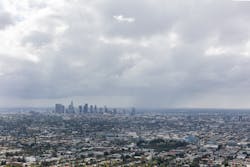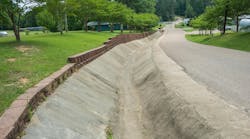Study Finds Los Angeles at High Flood Risk
A study published on October 31, 2022, found that hundreds of thousands of people in Los Angeles could experience at least a foot of flooding during a 100-year disaster.
The study's abstract says "between 197,000 and 874,000 people (median 425,000) and between US$36 billion and US$108 billion in property (median US$56 billion) are exposed to flooding greater than 30 cm within the 100-year flood zone, risk levels far above federally defined floodplains and similar to the most damaging hurricanes in US history."
According to the New York Times, this estimate is higher than the one produced by the federal government, which "classifies areas of the city containing about 23,000 residents as being at high risk in a 100-year event, or an event with a 1 percent chance of occurring in any year."
In the New York Times Article, the report's lead author Brett F. Saunders, a civil and environmental engineering professor at the University of California, Irvine, said the discrepancy is partly explained in how the new study takes a more "realistic view of the city's water infrastructure."
Saunders and his colleagues used survey data collected with lidar to examine how the city's waterways could handle a severe storm in their current state.
FEMA declined to comment directly on the study to the New York Times, but in a written statement, David I. Maurstad, senior executive of the agency’s National Flood Insurance Program, said "all homeowners should learn about flood exposure on their property, whether or not they live in areas FEMA considers high risk."
While California's weather is commonly known for extreme droughts and wildfires, hotter air can carry more moisture, thus global warming is causing the state to experience more intense winter rainstorms, specifically, atmospheric rivers, the New York Times said.
Currently, California has a "roughly 1-in-50 chance" each year of experiencing another weeklong megastorm, similar to the one the state experienced in 1861-62. Gobal warming has approximately doubled those odds compared with a century ago.
In this recent study, the research team, which studied how water might move through the city by building a high-resolution topographic map, estimated flood risks by subjecting the city, in a computer model, to 24 hours of rain at levels that, according to the National Oceanic and Atmospheric Administration, have a 1% chance of occurring in any year.
As might be the case if rain came in the middle of a weekslong storm and the ground was already saturated, the team assumed this rain would not be able to soak into the ground.
The city has held public information sessions on flood risk and worked with FEMA and the U.S. Army Corps of Engineers to update flood hazard maps, Harrison Wollman, a spokesman for Los Angeles’s mayor, Eric Garcetti, told the New York Times.


